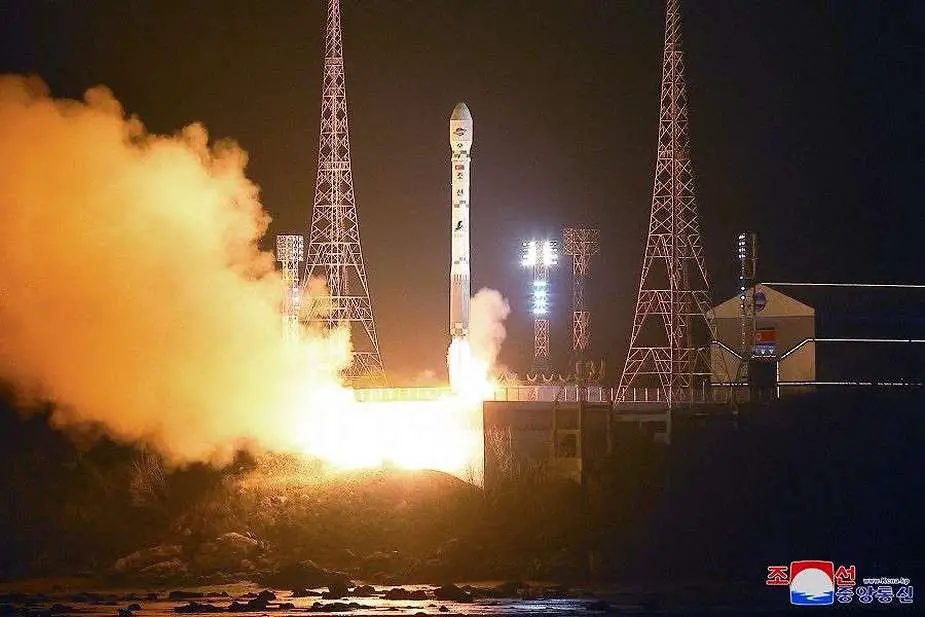Breaking news
North Korea Captures Images of Key US Military Sites with its New Spy Satellite.
On November 30, 2023, North Korea announced the capture of detailed images of key military sites in the United States, Japan, Egypt, and other locations with its new spy satellite. The country successfully launched its spy satellite, Malligyong-1, on November 22, 2023, after two previous failures earlier in the year.
Follow Army Recognition on Google News at this link

The launch of the North Korean spy satellite was held on November 22, 2023. (Picture source KCNA)
The Korean Central News Agency (KCNA) reported on November 30, 2023, that North Korean leader Kim Jong-un personally reviewed the satellite images at the Pyongyang General Control Center of the National Aerospace Technology Administration. These images reportedly include the San Diego Naval Base in California, captured at 2:24 a.m. on Wednesday, the Kadena Air Force Base in Okinawa, Japan at 10:16 a.m., and the strategic Suez Canal in Egypt at 4:36 p.m.
Further escalating tensions, North Korea claims that Malligyong-1 also took photographs of highly sensitive sites such as the White House, the Pentagon, and major military facilities in South Korea, Guam, and Hawaii. However, the North Korean government has not released any of these additional images to corroborate these claims.
The international community, particularly the United States and its allies, have yet to officially respond to these assertions. Security analysts worldwide are scrutinizing the potential implications of North Korea's enhanced surveillance capabilities, considering the nation's history of provocative actions and opaque military agenda.
The deployment of North Korea's spy satellite, like the reported Malligyong-1, marks a notable escalation in the country's technological capabilities, particularly in intelligence gathering. With such a satellite, North Korea could significantly enhance its surveillance over key global players like the United States, South Korea, and Japan. The primary advantage would be the ability to conduct advanced reconnaissance on military installations, monitor troop movements, and gauge defense readiness. This satellite imagery could provide North Korea with critical insights into the military strategies and assets of these countries.
Furthermore, the satellite could also be used to intercept communications and gather electronic intelligence. This means that North Korea could potentially eavesdrop on military communications, track naval and air movements, and even gather data on missile defense systems. Such capabilities would not only bolster North Korea's defense but could also serve as a strategic tool in diplomatic negotiations, giving them a leverage point.
The enhanced surveillance might also contribute to North Korea's own defense strategies, allowing for more informed decisions regarding its military positioning and development. For South Korea, Japan, and the United States, the presence of such a satellite would necessitate a review and possible adjustment of their military and security protocols to counter the increased surveillance from North Korea.
It's important to note, however, that the effectiveness of such a satellite, and the accuracy of the data it collects, would largely depend on the technological sophistication of the satellite itself. Moreover, the international community, particularly the countries in North Korea's surveillance scope, would likely respond with increased vigilance and enhanced counter-surveillance measures, potentially leading to a new level of security dynamics in the region.
Defense News November 2023


























